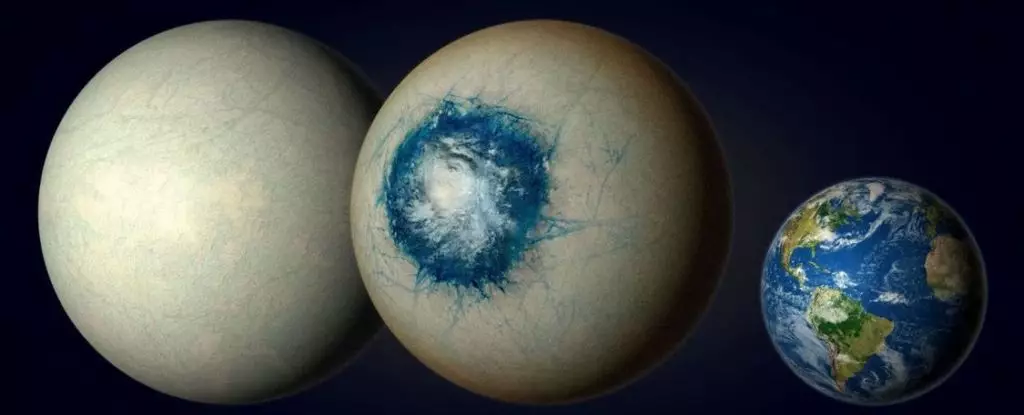Exoplanet LHS-1140b, discovered in 2017, has recently caught the attention of scientists due to its unique characteristics. It is believed to be an ‘eyeball’ planet, with a global ocean covered in ice, featuring a single, iris-like region of approximately 4,000 kilometers across, constantly staring at its host star. This bizarre description adds to the mystery and intrigue surrounding this alien world, making it a fascinating subject for further research and exploration.
While the concept of an ‘eyeball’ planet may seem like something out of science fiction, the scientific community sees LHS-1140b as a promising candidate for the existence of life beyond our Solar System. With a radius 1.73 times that of Earth and 5.6 times its mass, it is classified as a terrestrial world. Its orbit around a cool, dim, red dwarf star places it within the habitable zone, where conditions could support the presence of liquid water, a key ingredient for life as we know it.
To gain deeper insights into the potential habitability of LHS-1140b, researchers have turned their attention to its atmosphere. By using the powerful James Webb Space Telescope (JWST), scientists have been able to analyze the way light changes as the exoplanet transits in front of its host star. This technique allows them to identify the composition of the atmosphere by observing how certain wavelengths of light are absorbed or amplified. The presence of nitrogen, similar to Earth’s atmosphere, hints at the possibility of a secondary atmosphere and raises questions about the planet’s evolution and environmental conditions.
A Balancing Act of Extremes
Despite being located in the habitable zone, LHS-1140b presents a challenging environment for potential life forms. The phenomenon of tidal locking means that one side of the exoplanet is in perpetual daylight, while the other side remains in constant darkness. This could lead to extreme temperature variations, with the side facing the star being warm enough to support a marine ecosystem, while the dark side could freeze over. The contrast between these two regions creates a visually striking image of an ‘eyeball’ planet floating in space, challenging our perceptions of what constitutes a habitable world.
Future Prospects in Exoplanet Research
The discovery of LHS-1140b opens up new avenues for exploring the diversity of exoplanets and their potential for hosting life. Scientists are eager to gather more data and conduct further observations to confirm the presence of an Earth-like atmosphere and delve deeper into the mysteries of this alien world. As technology advances and space exploration continues to push the boundaries of our knowledge, we may soon uncover more about the weird and wonderful worlds that exist beyond our Solar System. The quest for understanding the universe and seeking out signs of life in distant planets keeps us intrigued and inspired to unlock the secrets of the cosmos.


Leave a Reply